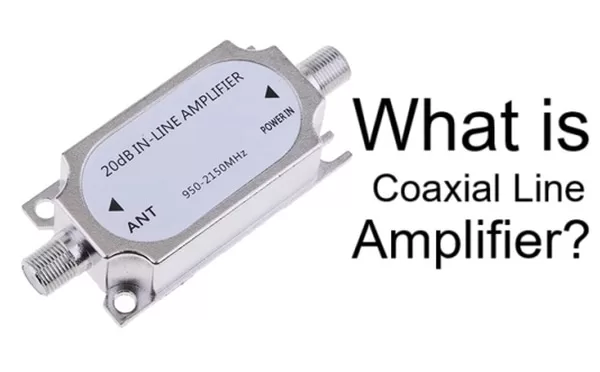A coaxial line amplifier is a specific type of line amplifier that is designed to work with coaxial cables, which are commonly used for transmitting audio, video, and data signals over long distances. Coaxial cables consist of a central conductor surrounded by an insulating layer, a conductive shield, and an outer jacket.
A coaxial line amplifier is typically inserted into the signal path between the signal source and the destination device, and it amplifies the signal traveling through the coaxial cable. The amplifier helps to compensate for signal loss due to the length of the cable or the number of components in the signal path, as well as to overcome noise and interference.
Coaxial line amplifiers are commonly used in cable TV systems, where the signal must be transmitted over long distances from the cable provider to the subscriber’s TV. They are also used in other applications, such as CCTV systems, satellite TV systems, and broadband Internet networks.
Coaxial line amplifiers come in a variety of types and configurations, depending on the specific application and signal requirements. They may have different input and output impedance levels, frequency response ranges, and amplification levels. Some coaxial line amplifiers also include filtering and equalization features to help improve signal quality.
A coaxial line amplifier for DTH (Direct-to-Home) is a specific type of coaxial line amplifier that is designed to work with satellite TV systems, which use coaxial cables to transmit digital TV signals from the satellite to the receiver in the subscriber’s home.
Table of Contents
Key Features and Applications –
- Amplifies weak RF signals to maintain signal quality
- Compensates for signal loss due to cable attenuation
- Used in cable television (CATV), satellite TV, and broadband internet
- Enhances signal strength for distribution to multiple outlets
- Available in various frequency ranges (e.g., 40-870 MHz)
How Coaxial Line Amplifier Works –
- Receives incoming RF signal from coaxial cable
- Amplifies signal using electronic components (transistors or ICs)
- Outputs amplified signal to continue transmission
Coaxial Line Amplifier Types –
- Uni-directional (one-way) amplifiers
- Bi-directional (two-way) amplifiers for upstream and downstream signals
- Benefits:
- Improves signal quality and reliability
- Extends cable run lengths without signal degradation
- Supports multiple outlets and devices
What is the function of a line amplifier? A coaxial line amplifier is commonly used for transmitting audio, video, and data signals over long distances.You can buy a coaxial line amplifier here.
Discover more from TrackDish - TV Installation Guide
Subscribe to get the latest posts sent to your email.
Show Comments
